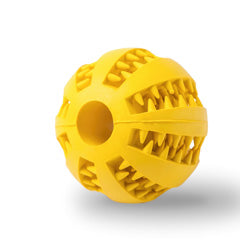As someone that has lived in Texas and Florida for over 45 years, hurricanes are not new to me. I remember being 8 years old when Hurricane Alicia hit Houston, Texas back in 1983. I remember walking around after the storm and looking at all of the debris and all of the crazy things that got washed up onto the streets. I swear people were riding around in boats because there was so much flooding afterwards.
Storms and hurricanes can be traumatic for both humans and pets, but the danger doesn’t end once the skies clear. After a storm, the environment remains full of hazards that can pose serious risks to your dogs and cats. It’s important to take precautions to ensure their safety and well-being. Here’s a guide on how to protect your pets in the aftermath of a storm.
1. Leash Up and Supervise
Once the storm has passed, your first instinct might be to let your pets outside, but it’s crucial to be cautious. Always keep your dogs and cats on a leash or under close supervision when outdoors. The environment is likely scattered with dangerous debris, such as broken glass, sharp objects, and downed power lines, which can injure them. Floodwaters may also contain harmful bacteria, chemicals, or toxins, so avoid letting your pets drink from or play in standing water.
2. Check for Hidden Hazards
Before allowing your pets to roam freely, thoroughly inspect your yard or the surrounding area for any potential dangers. Fallen branches, unstable structures, or displaced wildlife could pose a threat. Make sure the area is clear and safe before letting your pets explore. Disasters can also damage fences and gates, making it easier for pets to escape, so ensure your home’s boundaries are secure.
3. Provide Clean Food and Water
Access to clean, uncontaminated food and water is critical in the aftermath of a storm. Flooded areas often have compromised water supplies, so be sure to give your pets bottled or filtered water. Avoid feeding them food that may have been left exposed to floodwaters or contaminated by the storm. This step is essential to prevent illnesses caused by bacteria or chemicals present in the environment.
4. Monitor Their Behavior
After a storm, your pets may experience anxiety or stress due to the sudden changes in their environment. Watch for signs of distress, such as excessive barking, hiding, or aggression. Offering comfort and maintaining a calm environment can help ease their anxiety. Additionally, keep an eye on their physical health. If your pet exhibits symptoms such as vomiting, diarrhea, or unusual lethargy, these could be signs they’ve ingested something harmful or are suffering from stress-related illnesses.
5. Seek Veterinary Care if Needed
Even if your pets appear unharmed, it's a good idea to monitor them closely for any signs of injury or illness. After a storm, the risk of infections or exposure to harmful substances increases, so be proactive about seeking veterinary care if you notice any abnormal symptoms. It's also important to ensure their vaccinations are up to date, particularly if they’ve been exposed to contaminated environments or other animals.
6. Secure Your Home
Inspect your home and outdoor areas for any storm-related damage. Broken windows, doors, or fences can provide easy escape routes for anxious pets. Before allowing your pets to return to their usual routines, make sure your home is secure and free of hazards. This is especially important if your neighborhood experienced significant damage, as it could take time for public services to restore normal conditions.
The aftermath of a storm can be chaotic, but taking these precautions will help keep your pets safe and secure. By leashing up, checking for hazards, ensuring clean food and water, monitoring behavior, seeking veterinary care when necessary, and securing your home, you can protect your furry friends and help them recover from the stress of the storm. Preparing for both the storm and the period that follows is the key to keeping your pets happy, healthy, and safe.














